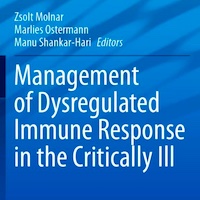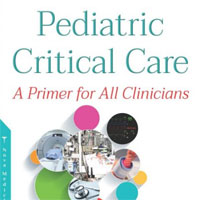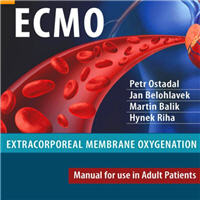Tag: sepsis
Mechanical Ventilation Timing in Sepsis
A recent study by Dr. Kim and colleagues examined the association between the timing of mechanical ventilation (MV) and clinical outcomes in ICU patients with sepsis. The study included 2440 adult sepsis patients from... read more
Outcomes of Older Adults With Sepsis at Admission to an ICU
Our study suggests that treating older adults with therapies recommended by the Surviving Sepsis Campaign may improve outcomes in this age group, although mortality remains high for older adults with sepsis. In addition,... read more
Early Tracheostomy in Ventilated COVID-19 Patients Reduces VAP Incidence
Tracheostomy can reduce mechanical ventilation (MV) duration, ICU and hospital length of stay (LOS), and ventilator-associated pneumonia (VAP) risk in critically ill patients. The timing of tracheostomy in COVID-19 patients... read more
Septic Shock in the Prehospital Setting
Septic shock (SS) is a potential life-threatening condition in which an early identification and immediate therapy stand out as the main cornerstones to improve survival chance; in this context, emergency medical services... read more
Management of Dysregulated Immune Response in the Critically Ill
This book, part of the European Society of Intensive Care Medicine (ESICM) textbook series, deals with dysregulated host response a relatively new term introduced by the Sepsis-3 definitions in 2016. In contrast to systemic... read more

Distinct Immune Profiles and Clinical Outcomes in Sepsis Subphenotypes Based on Temperature Trajectories
Sepsis subphenotypes identified using the universally available measurement of body temperature had distinct immune profiles. Hypothermic patients, who had the highest mortality rate, also had the lowest levels of most pro-... read more
Presepsin Does Not Predict Risk of Death in Sepsis Patients Admitted to the ICU
In patients with suspected sepsis admitted to the Intensive Care Unit, presepsin does not accurately predict the risk of in-hospital death, but it can predict a positive microbiological culture. Adult patients were included... read more
Predictive Value of Combined Detection of Serum LGALS3BP and GDF-15 for the Prognosis of ICU Sepsis Patients
Serum LGALS3BP and GDF-15 levels are abnormally elevated in the death group of ICU sepsis patients, suggesting potential application value as prognostic markers for sepsis. The combined use of LGALS3BP and GDF-15 can... read more
Correlation of Serum Albumin Levels With the Severity of Sepsis Among ICU Patients
In the present study, serum albumin level was noted as a reliable predictor of sepsis severity in ICU patients. Lower serum albumin levels were associated with higher SOFA scores, indicating more severe sepsis. This study... read more
Procalcitonin and Neutrophil to Lymphocyte Ratio Trends in ICU Sepsis Patients
Understanding the trends of PCT and NLR concerning the infection source can provide deeper insights into their diagnostic and prognostic capabilities. This comparative analysis of PCT, NLR, and SOFA score trends contributes... read more
Half of Sepsis Patients Face Death Within Two Years
Half of all patients with sepsis admitted to an emergency medical department died within two years, according to Danish researchers investigating factors that could predict outcomes for these patients. Dr. Finn E. Nielsen,... read more
Iloprost and Organ Dysfunction in Adults With Septic Shock and Endotheliopathy
In this randomized clinical trial of adults in the ICU with septic shock and severe endotheliopathy, infusion of iloprost, 1 ng/kg/min, for 72 hours did not reduce mean daily SOFA scores compared with placebo. In a clinical... read more
Human albumin solution for on-pump cardiac surgery: benefit or burden?
Deidentified individual participant data collected during the HAS FLAIR-II trial (and the data dictionary) will be shared beginning two years after article publication with no end date. These data will be available to... read more
Improving Patient Outcomes: Sepsis Protocols and Rapid Host Response Technologies
Patients come into the emergency department (ED) with symptoms, not diagnoses. That’s when time is of the essence. Clinicians must quickly triage patients and establish an appropriate care pathway to obtain the best possible... read more
Pediatric Critical Care: A Primer for All Clinicians
Pediatric critical care is an emotionally and intellectually demanding field of medicine; however, it is at its core the discipline focused on saving and improving the lives of children affected by acute and chronic illnesses,... read more

Functional Dependence Following ICU-treated Sepsis
Sepsis survivorship was associated with a broad range of new impairments and led to functional dependence in around one quarter of patients. Targeted measures are needed to mitigate the burden of this Post-Sepsis-Syndrome... read more
Impact of the Timing of Invasive Mechanical Ventilation in Sepsis Patients
In patients with sepsis admitted to ICU and received invasive mechanical ventilation (MV), early MV was associated with lower ICU and in-hospital mortality and a shorter ICU stay. Additionally, at ICU discharge, early... read more
Army Scientists’ Technique for Early Sepsis Detection in Burn Patients Submitted to FDA
A new invention developed at the U.S. Army Medical Research and Development Command uses an artificial intelligence machine learning algorithm to identify whether burn patients are at risk of experiencing life-threatening... read more
Early sodium bicarbonate therapy for critically ill patients with septic shock and acute moderate metabolic acidosis
In recent decades, septic shock has continued to be a life-threatening health problem around the world. Meanwhile, metabolic acidosis (MA) is also well known in critically ill patients, and even moderate metabolic acidosis... read more
Outcomes of ECMO in ARDS in Pediatric Trauma Patients
Among children who suffer from acute respiratory distress syndrome (ARDS) complications following trauma, the use of extracorporeal membrane oxygenation (ECMO) failed to show any association with mortality benefit. More... read more
Comorbid Burden at ICU Admission in COVID-19 vs. Sepsis and ARDS
The burden of age and comorbidity is more prominent in ICU-admission for sepsis and acute respiratory distress syndrome (ARDS) than for COVID-19. This is likely to be caused by a combination of COVID-19 affecting the relatively... read more
Sepsis Mortality Prediction in ICU Patients Using Machine Learning
This study has achieved significant advancements in predicting sepsis outcomes by utilizing advanced machine learning techniques and sophisticated data preprocessing methods. These methods include data grouping and effective... read more









